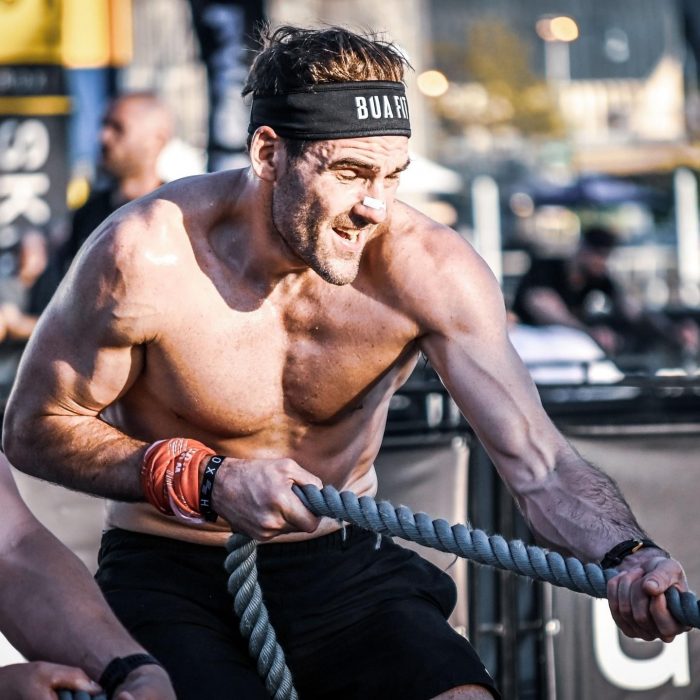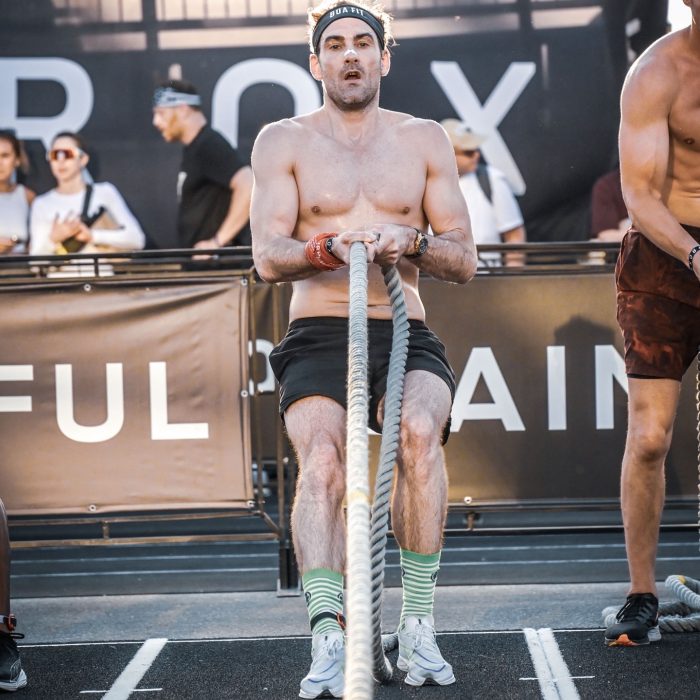25 Learnings from 3 Hyrox Single Pros by our Founder
What is Hyrox?
Hyrox is a global fitness race designed to test both endurance and strength in a unique competition format. It combines functional exercises with running, creating a high-intensity workout that is accessible to a wide range of athletes, from fitness enthusiasts to elite competitors.
Format of a Hyrox Pro Race
A standard Hyrox race consists of 8 km of running, broken into eight 1 km intervals. Between each running segment, participants must complete a functional workout station. These stations include:
- 1 km run
- 1000m Ski Erg – an upper body cardiovascular workout using a ski ergometer.
- 1 km run
- 202kg 50m Sled Push – pushing a heavy sled over a 50-meter distance.
- 1 km run
- 154kg 50m Sled Pull – pulling a sled over a 50-meter distance.
- 1 km run
- 80m Burpee Broad Jumps – a combination of burpees and broad jumps over an 80-meter distance.
- 1 km run
- 1000m Row – rowing 1000 meters on a rowing machine.
- 1 km run
- 64kg 200m Farmers Carry – carrying heavy weights over a 200-meter distance.
- 1 km run
- 30kg 100m Sandbag Lunges – lunging with a sandbag over the shoulders for 100 meters.
- 1 km run
- 9kg 100 Wall Balls – squatting and throwing a weighted ball to a target 10 feet high, 100 times.
For context, David came 4th in his 3rd Hyrox race (NYC 🇺🇸) and missed his first podium by seconds.
“From my experience and to set the tone for your first race: it was very overwhelming in the arena in Madrid. You will make mistakes. My mouth dried up very quickly and I was super hydrated. I got mush brain. I was dizzy. The pro weights are extremely heavy and the judges are very strict on form; they will penalise you, and rightly so, which is the major difference from the open category. This category is designed to push you to the brink of quitting, and I considered it about 100 times in my first race, despite being advanced with my fitness, but LOVED the experience of it all!
Right, let’s get into it.
- Mental preparation is just as important as the physical.
- The solo race is all about race IQ; you have nobody to push or pull you like in the teams. In your first race, relish the learnings.
- Don’t try to compete against other athletes. This is you versus you.
- It’s a sport (race) of perseverance.
- Going slow is going fast.
- It’s all about the 1km runs; practise running as fast as you can with high heart rates but really focus on not gassing out.
- Take your time on the Ski Erg; you have a long way to go. I go around 40 seconds slower on purpose.
- Don’t try to be good at everything.
- Double down on your strengths and give them a push.
- On your weaker stations, consider not pushing yourself too hard to store energy.
- On the 154kg sled pull, I found pulling only with my back and giving my legs a break really worked. That being said, only using your back makes it much heavier.
- On the 202kg sled push, I made up a lot of ground by not taking a break until I fully crossed the line. Other people say taking 8 steps and then stopping works better for them, but not for me.
- For the 64kg Farmer Carry, hold on tight for as long as you can. In Berlin, I didn’t drop it once as I chalked up well. In NYC, they ran out of chalk, and I dropped them 3 times with sweat coming onto the metal, losing 1 min 20 secs, so in my next race, I’ll have chalk in my pocket.
- Don’t fly or travel on race day; this was a big mistake for Madrid.
- In Berlin, the runs were all outdoors. I thought I was going much faster than in an arena venue because I wasn’t gassed as much, but I was slower, so be mindful of this.
- For New York, I ate way too much food the day of the race, and it slowed my runs down big time. The pro race is always around 6/7pm, so you are waiting around. Make sure you are racing on a light stomach.
- The rowing is your rest – it’s not worth going faster to save just 30 seconds.
- 100 Wall Balls at the end, hitting a 10ft target with a 9kg ball, put me in a pain cave I’ve never experienced before, so be prepared for the toughest part at the end. I gassed out in all 3 races; this is my worst station!
- Train for failed reps on the wall balls.
- Tell the judge your strategy before you start the wall balls; I shaved over 3 minutes off my first race with this move.
- Let the judges do their job and judge. Like a referee, at times, you won’t agree with them; shut up and don’t waste any energy questioning their decisions.
- Pick someone to chase.
- Have hydro tablets or gels in your pocket.
- Focus on sleep the week leading up to the race and taper down.
- Store as much energy as possible 24 hours before race time.

And finally, have a fun buzz. It’s supposed to be enjoyable! In my experience, it’s a bit of a love/hate relationship because the solo categories are super tough. If you want to make it a bit more fun, I reckon teaming up with a partner or doing the relay category. One thing I guarantee is that you’ll feel awesome and that you accomplished something post-race no matter what position or time you get.
*Disclaimer: This is a matter of opinion, and different athletes have different views based on their strengths, weaknesses, and body types. I’m 6ft 3 and lanky, so if you are similar, some of these tips should work for you.” – David Stapleton, BUA FIT.
BUILD A HEALTHIER BUSINESS
Keep it interesting, convenient, and fun. Choose from a wide variety of wellness solutions and let us take care of all the hassle.
Schedule a classBUILD A WELLNESS BUSINESS
We invest in your success. Build your income and wellness brand at lower risk.
Get Set Up